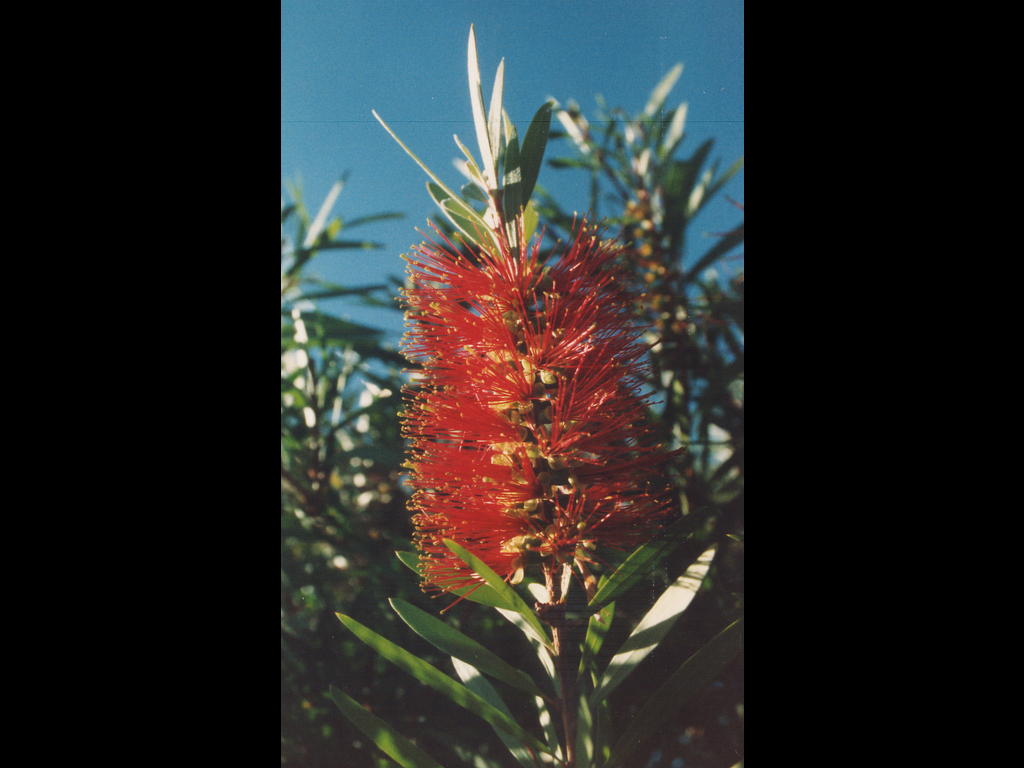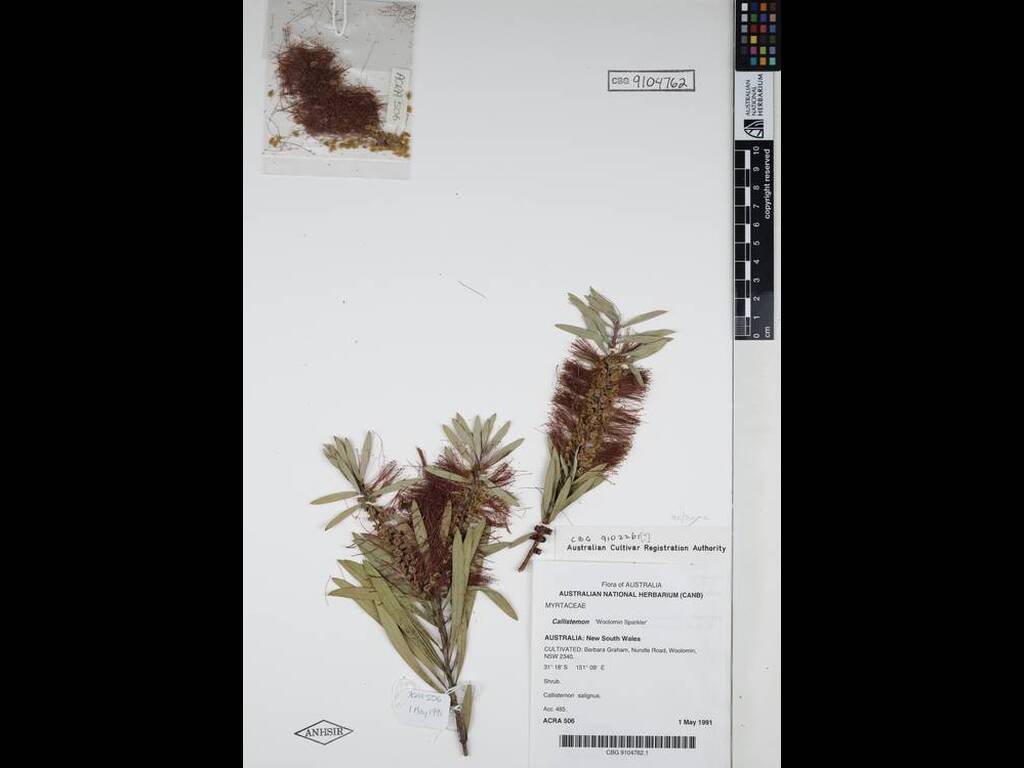Callistemon 'Woolomin Sparkler'
- File Number
- 485
- ACRA Field Book Number
- 503
- Registration Date
- 15/10/1992
- Application Received
- 18/04/1991
- Family
- Myrtaceae
- Cultivar Name
- Callistemon 'Woolomin Sparkler'
- Origin
- Callistemon 'Woolomin Sparkler' was raised from seed collected from a pink form of C. salignus. It is possibly a hybrid between this and C. 'Harkness' or less likely C. citrinus. It arose at Bushcraft Nursery, Woolomin NSW and was named after this town. It was selected in 1987. This cultivar was first received by the Authority on 18 April 1991. Registration applied for by Mrs Barbara Graham, Bushcraft Nursery, Woolomin, NSW.
- Characteristics
- A medium-sized shrub to 3m high by 2m across with compact habit and dense foliage. The leaves are narrowly oblanceolate to 80mm long by 7mm wide tapering towards the base. The apex is pointed. The red flowers are borne in spikes clustered near the branch ends. The anthers are yellow. Each spike is about 80mm long by 60mm across from specimen, although spikes to 120mm long are claimed by the originator. Flowers over a long period starting September, peak October and again March and April. Diagnosis: Differs from C. salignus pink form in having: * Red flowers * Flower spikes borne in clusters near the branch ends * Extended flowering period Differs from C. 'Harkness' in having: * Shorter flower spikes * Shorter leaves * More upright habit Differs from C. citrinus in having: * Lighter green leaves * Flower spikes in clusters * Extended flowering period
- Cultivation
- This cultivar is very frost tolerant. Tolerates temperatures to -10 degrees and is very drought resistant. Propagation must be by vegetative methods in order to maintain clonal properties.
- Publication
- Australian Cultivar Registration Authority (1993), Australian Plant Cultivars. Australian Plants 17(134): 55
- Colour Coding
- RHS Colour Chart 1966.Filaments: Red Group 45A.
- Propagation
- Cuttings from semi-firm new growth
- Applicant Name
- Barbara Graham
- Uses
- As part of a mass planting or mixed in a shrubbery, or as a spectacular feature plant. Attracts nectar feeding birds.
- Availability
- Unknown
- ANBG Accession Numbers
- ACC485; ACRA502/506; CBG9102261/9104762.
- NSL ID
- -


